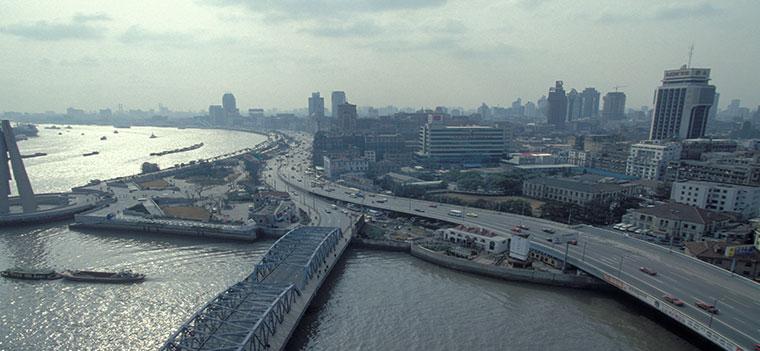News
- China has the largest logistic sector in the world, but poor infrastructure networks, connectivity, and integration are hampering the sector. Efficient and green logistics will improve competitiveness, energy efficiency, and reduce harmful emissions.
- The World Bank approved a US$100 million loan to help enhance the efficiency of the Xiaogan Logistics Park. By modernizing the park, the project is expected to support greener growth and help create jobs to boost the incomes of almost 40,000 people.
- ESMAP is addressing knowledge gaps for the efficient and green operation of the park by promoting best practices and new knowledge, and building staff capacity.
Over the past three decades, China has been rapidly urbanizing with over 260 million dwellers moving to large cities. This trend, coupled with an increase in domestic consumption and skyrocketing e-commerce has resulted in a massive movement of goods.
The numbers are staggering. Over the past two decades, total freight ton-kilometers transported in China grew by almost 9% annually, reaching 16.8 trillion ton-km in 2013. Freight volumes are expected to reach 80-90 billion tons in 2025. In 2014 alone, nearly 38 million express parcels were delivered daily, almost 50% more than in the US, and this is expected to rise to 139 million by the end of 2020—mostly in the country’s central region.
Immense growth in the movement of goods has given rise to the development of the logistics sector—a process that is part of supply chain management that plans, implements and controls the efficient and effective flow of goods. Growing at over 20% a year, the country’s logistic sector is now the largest in the world.
However, poor infrastructure networks are hampering the sector’s efficiency. While the country has expanded its transport infrastructure, connectivity and integration between various modes of transportation has been lagging behind. Moreover, good warehousing is in short supply.
These inefficiencies do not only result in lower quality services but also higher energy consumption and emissions, which are impacting the environment and contributing to climate change. Total energy use reached 2,728 million tons of oil-equivalent (Mtoe) in 2011, 24% more than in the US. As a result, China now produces a quarter of the world’s greenhouse gas emissions, making it the world’s largest emitter. Moreover, the country is responsible for 60% of the world’s increase in carbon emissions in the past decade. Achieving energy efficiency in the transport sector, responsible for nearly 15% of total energy use and more than 20% of greenhouse gas emissions, will be crucial in reducing the sector’s carbon footprint.
China’s Xiaogan Municipality in the Hubei Province has experienced increased domestic consumption which led to higher freight demand. The Xiaogan Logistics Park (Xiaogan LP) was built as a regional distribution center and has already attracted investments from the leading logistics companies in China and Southeast Asia. Improving its infrastructure can impact the area’s development and improve the livelihood of its large low-income population. That is why the Government of China (GoC) has partnered with the World Bank on a US$100 million project to enhance the connectivity and efficiency of the park’s operations. The project will help build the missing connectivity links by financing the construction of selected roads and utilities, a logistics information management building, a public information platform, and an intelligent transport system.
The World Bank’s Energy Sector Management Assistance Program (ESMAP) is supporting implementation of the project by ensuring that best practices are used for an efficient and green logistics park. While there is plenty of documentation and capacity at a national level to implement projects like this one, such efforts at a municipal level receive less attention. ESMAP support is addressing this knowledge gap by exposing staff working on the Xiaogan LP to best practices through study tours, capacity building workshops, as well as guidelines developed by professional consultants.
More specifically, ESMAP is financing the following activities:
(i) Study Tours: visits to 3-4 highly performing logistics parks in order to give key staff working on the Xiaogan LP exposure to best practices in green and efficient logistics. The staff will engage in workshops with parks’ management and city officials.
(ii) Knowledge Production:recruitment of a consultant to develop a guide on green logistics measures adapted for the context of Chinese municipalities. The guide will provide measures that can be implemented at municipality level in order to reduce emissions from logistics activities. Xiaogan will serve as a case study for the guide.
(iii) Capacity Building:training sessions for key staff working on the Xiaogan LP to build capacity on efficient management of logistics parks.
By supporting the modernization of the logistics park, the project is expected to help create jobs and boost the incomes of almost 40,000 people, of whom 15,500 are women. It will also support greener growth by reducing environmental impacts by using greener materials, promoting fuel efficiency and reducing traffic congestion.
